
The 6 Types of Safety Tags You Need
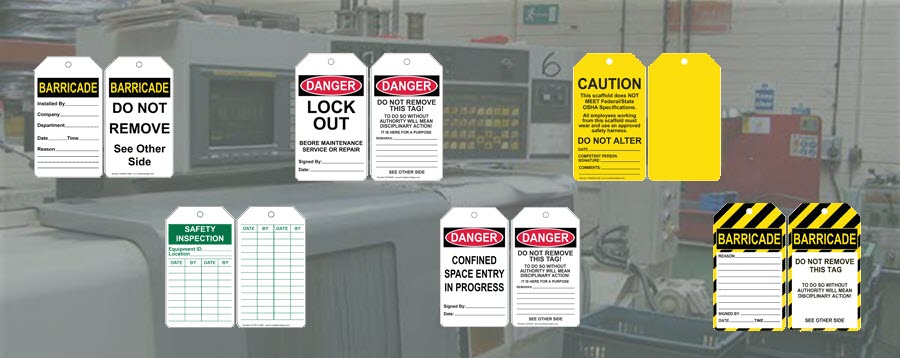
When you think about your overall safety program, do you think about communication? Communication is a key element to proper safety. Some of the most overlooked methods of safety communication are different types of safety tags.
If you think of safety tags and your mind jumps to lockout/tagout procedures, that’s good! Those are very important tags to have and to use. But, there are other tags that you need in the workplace. Here are six types of safety tags you need and why they’re important.
Lockout/Do Not Operate Tags
Most companies have machines. And, like all machines, that equipment needs work from time to time. It may be a significant project, or it could be a simple maintenance issue. In either case, you will shut down equipment and machinery for someone to work on it safely.
That’s where lockout-tagout (LOTO) tags come in. Lockout/tagout tags let other workers know that the machine is currently being serviced and that they should not try to turn it on.
In 2019, lockout/tagout was the 4th most commonly cited violation by OSHA. The penalty for lockout/tagout citations in 2019 was as much as $13,260 per violation. Additional fines of up to $13,260 are added per violation per day past the deadline to fix the issue.
Ladder & Scaffold Tags
Falls are one of the most common causes of workplace injuries. Improperly used, constructed, or maintained ladders and scaffolding are accidents waiting to happen.
Scaffolding and ladders came in #3 and #6 on OSHA’s most commonly cited violations for 2019. Ladder and scaffold tags are a big part of the solution. These tags communicate to employees which ladders and scaffolding have been inspected, which are safe to use, and which are unsafe.
Ladder and Scaffold Tags
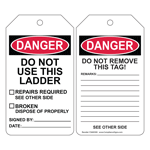 | 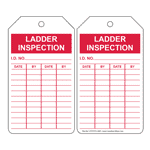 | 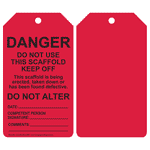 | 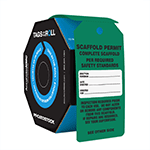 |
OSHA citations for ladder or scaffolding violations can cost $13,000. Additional fines are added for each day past the deadline to remedy the issue. Having the proper type of tags in place improves communication and reduces the risk of improper use of ladders and scaffolding, which reduces your risk of a hefty fine.
Inspection Tags
Regular equipment inspections reduce the chances of equipment failure and worker injury – and help ensure your equipment will be ready for use when needed. But, you need to keep track of your inspections, so you know when they are done and what the results are for each one.
Inspection tags make it easy. These types of safety tags are made so you can identify the piece of equipment, the location, as well as the date of each inspection, and the name of the person who signed off on it.
Inspection Tags
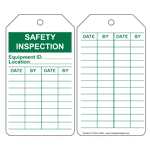 | 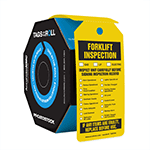 | 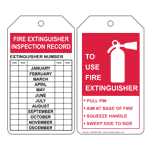 | 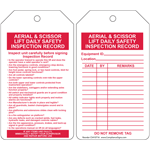 |
Some items, like portable fire extinguishers, are required to have an annual maintenance inspection. Others, like forklifts, need daily inspections. Keeping inspection tags on hand and on equipment is an easy way to keep track of when each item is inspected and by whom.
Machine Tags
Machines are an integral part of many businesses, but they also come with significant injury risk, especially when they are not in good working condition. Keep tags on hand that will alert employees when a machine is not operating or should not be turned on for any reason. Without the proper machine safety tags, a worker could fire up a faulty machine without knowing it and cause injury to themselves or others in the area.
Machine Safety Tags
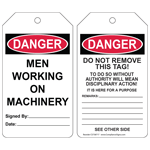 | 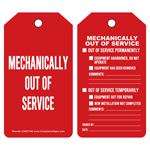 | 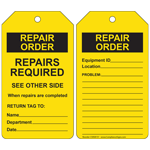 | 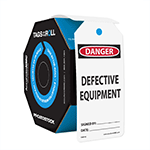 |
Barricade Tags
Barricades serve a simple purpose, to keep people out of a restricted area. Barricade tags are a great way to add a little more information to the situations.
By adding barricade tags, you can alert workers to the reason the barricade is there, who is authorized to enter, and who is in charge of the barricade should there be any questions.
Confined Space Tags
Working in confined spaces adds an extra level of danger. That’s especially true if that space has one of the following OSHA recognized hazards:
- a potentially hazardous atmosphere.
- material that can engulf an entrant.
- walls that converge inward or floors that slope downward and taper into a smaller area which could trap or asphyxiate an entrant.
- other serious physical hazards such as unguarded machines or exposed live wires.
A confined area meeting any of these criteria must be identified by the employer who is obligated to inform employees who may be exposed, of the existence and location of such spaces and their hazards.
Confined space tags help to identify these areas, clearly marking them as a “permit-required” workspace.
Confined Space Tags
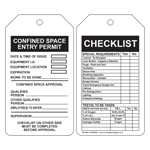 | 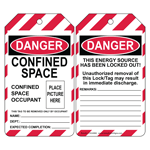 | 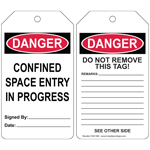 | 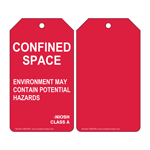 |
Small Tags That Make a Big Difference
Although safety tags are less than 6 inches tall, they can have a big impact in your workplace. Proper tagging throughout your facility is a key component of a safety program. Not only do tags communicate vital information, they are required by OSHA regulations and can save your company a lot of money in fines.
From equipment inspections to confined spaces, these 6 different types of safety tags help to keep your team safe and your workplace free from costly accidents.

